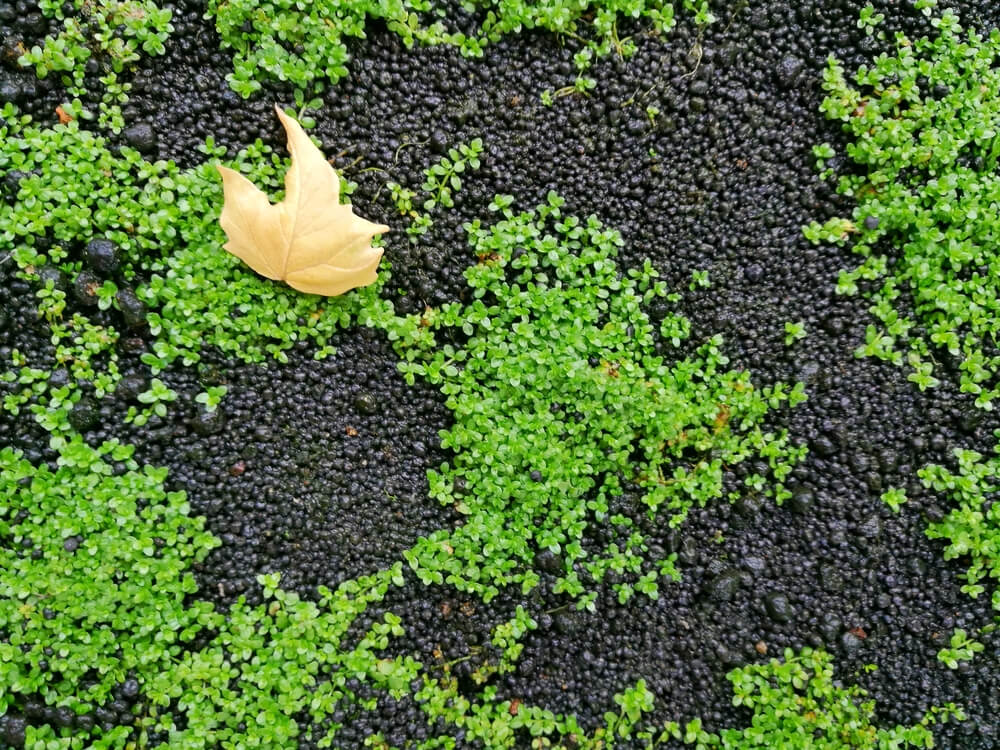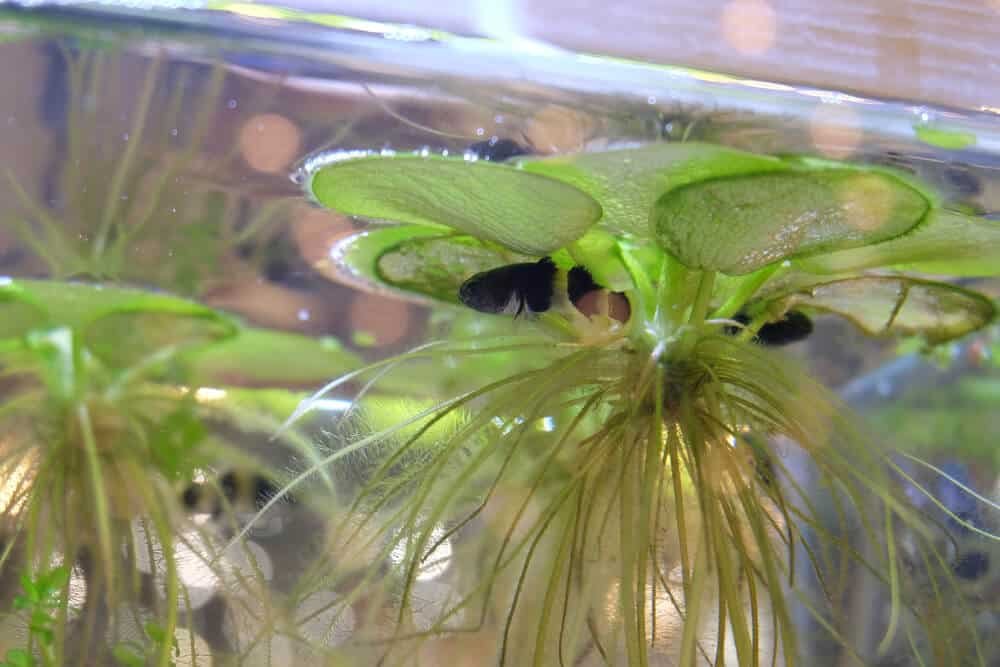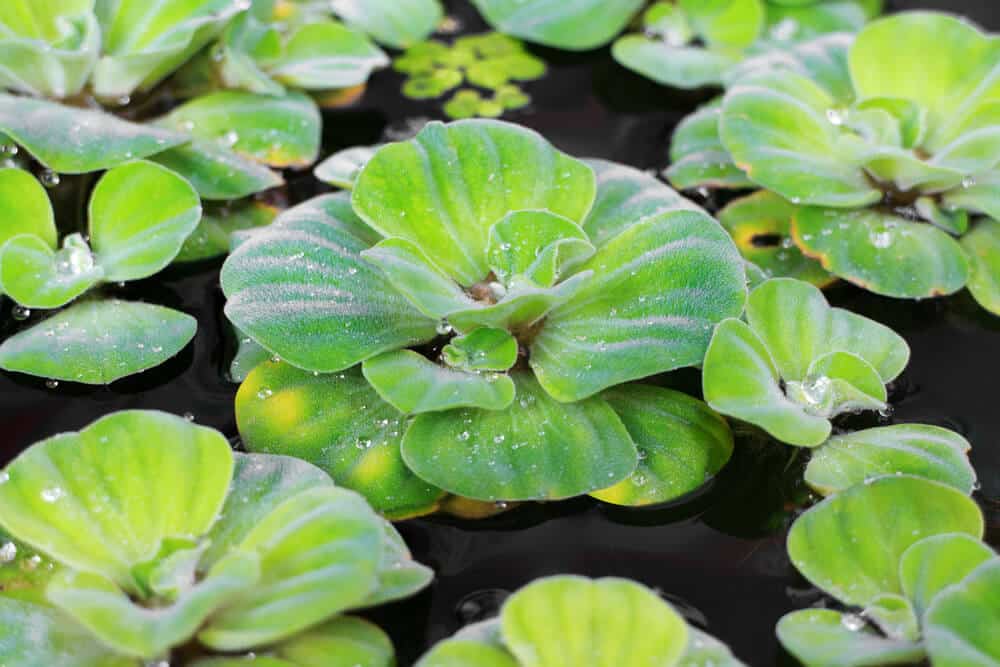Best Plants for Shrimp Tanks
Looking to add some greenery to your shrimp tank? Look no further! In this article, we will guide you through the best plants for shrimp tanks, providing you with all the information you need to create a thriving aquatic environment. We will discuss the benefits of plants in shrimp tanks, the requirements for a successful shrimp tank, the selection criteria for shrimp tank plants, and of course, the best plants themselves. From Anubias to Cryptocoryne, we will explore their characteristics, benefits, and care tips. Additionally, we will provide you with planting and maintenance tips, as well as potential challenges you may encounter. By the end of this article, you will be well-equipped to create a beautiful and healthy shrimp tank that both you and your shrimps will love. So, let’s dive in and discover the best plants for your shrimp tank!
Introduction
Welcome to the world of shrimp tanks! Whether you’re a beginner or an experienced aquarium hobbyist, incorporating plants into your shrimp tank can provide numerous benefits. In this article, we will explore the importance of aquatic plants in shrimp tanks and discuss the best plants that can thrive in these environments. By selecting the right plants, you can create a beautiful and thriving ecosystem for your shrimp.
Benefits of Plants in Shrimp Tanks
Water quality improvement
Plants play a vital role in maintaining water quality in shrimp tanks. They absorb harmful substances, such as ammonia and nitrates, which are produced by shrimp waste and decaying matter. Through a process called photosynthesis, plants convert carbon dioxide into oxygen, helping to oxygenate the water and create a healthier environment for your shrimp.
Providing shelter and breeding spaces
Plants offer essential shelter and breeding spaces for shrimp. They create hiding spots that help shrimp feel safe and secure, reducing stress and promoting their overall well-being. Additionally, plants with dense foliage provide ideal locations for shrimp to lay their eggs and protect their offspring.
Aesthetic appeal
One of the most appealing aspects of incorporating plants into your shrimp tank is the aesthetic beauty they bring. Plants come in a variety of shapes, sizes, and colors, adding visual interest and creating a naturalistic environment for your shrimp. They can transform a plain tank into a lush and captivating underwater landscape.
Oxygen production
As mentioned earlier, plants produce oxygen through photosynthesis. This oxygen is vital for the well-being of your shrimp, as it helps them breathe and thrive. By introducing plants into your tank, you can contribute to the oxygen levels and provide a healthier living environment for your shrimp.
Algae control
Excessive algae growth can be a common problem in shrimp tanks. However, by introducing live plants, you can help control and reduce algae growth. Plants compete with algae for nutrients, light, and carbon dioxide, effectively limiting the resources available for algae to thrive. Additionally, the dense foliage of plants can create shade, preventing excess light from reaching the tank and inhibiting algae growth.
Shrimp Tank Requirements
Before diving into the specific plants suitable for shrimp tanks, it’s essential to understand the basic requirements for maintaining a successful environment for your shrimp.
Water parameters
Shrimp are known to be sensitive to changes in water parameters, so it’s crucial to maintain stable conditions. Regular monitoring of water parameters such as temperature, pH levels, and water hardness is necessary to ensure the optimal habitat for your shrimp.
Temperature
Shrimp thrive in specific temperature ranges depending on the species. Most commonly kept shrimp species prefer a temperature range between 72°F and 78°F (22°C to 26°C). It’s essential to invest in a reliable heater to maintain a consistent temperature in the tank.
pH levels
Shrimp prefer slightly acidic to neutral pH levels. Most species thrive in a pH range between 6.5 and 7.5, but it’s important to research the specific requirements of the species you plan to keep. Maintaining stable pH levels is essential for the health and well-being of your shrimp.
Water hardness
Water hardness refers to the amount of dissolved minerals, such as calcium and magnesium, in the water. Different shrimp species have varying preferences for water hardness levels. It’s important to research the specific preferences of your chosen shrimp species and adjust the water hardness accordingly.
Lighting conditions
Lighting plays a crucial role in plant growth and overall tank aesthetics. Most shrimp tanks require moderate to high levels of lighting to support plant growth. LED lights are ideal for shrimp tanks as they provide sufficient light while minimizing heat production. It’s also important to simulate a day-night cycle with a timer to maintain a consistent lighting schedule.
Substrate
A suitable substrate is essential for supporting plant root growth and nutrient uptake. It’s recommended to use a fine-grained substrate such as sand or specialized aquarium soil specifically designed for planted tanks. These substrates provide a nutrient-rich environment for plant roots and promote healthy growth.
Filtration and circulation
Proper filtration and water circulation are crucial for maintaining water quality in shrimp tanks. A reliable filter will help remove debris and maintain water clarity, while an appropriately sized circulation pump will ensure even water flow throughout the tank. Avoid strong water flow, as excessive currents can stress and harm shrimp.
Selection Criteria for Shrimp Tank Plants
When selecting plants for your shrimp tank, it’s important to consider several factors to ensure compatibility and success.
Compatibility with shrimp
Not all plants are shrimp-friendly. Some plants release toxins or have sharp leaves that can harm or even kill shrimp. Research and choose plants that are known to be safe and compatible with shrimp.
Growth rate
Consider the growth rate of plants when selecting for your shrimp tank. Fast-growing plants can quickly fill up space and provide ample hiding spots for shrimp, while slow-growing plants require less maintenance and trimming.
Low maintenance requirements
As a hobbyist, it’s essential to select plants that fit your availability and expertise. Some plants are more demanding in terms of care and maintenance, requiring regular pruning, fertilization, and attention. Choose plants that suit your level of commitment and available time.
Light and nutrient requirements
Different plants have varying light and nutrient requirements. Some plants thrive in low-light conditions, while others require high-intensity lighting. Consider the lighting setup in your tank and choose plants that match those conditions. Similarly, consider the nutrient needs of the plants and ensure they can be met with the available resources in your tank.
Aesthetic appeal
The visual appeal of plants is an important aspect to consider when decorating your shrimp tank. Choose plants that complement your desired aesthetic and create a visually pleasing underwater environment.
Rooted vs. Floating plants
Some plants root in the substrate, while others float freely on the water’s surface. Both types of plants can be beneficial in shrimp tanks. Rooted plants provide stable anchorage for shrimp and can serve as breeding grounds, while floating plants provide shade, reduce algae growth, and add a unique dimension to the tank.
Best Plants for Shrimp Tanks
Now that we have discussed the benefits of plants in shrimp tanks and the selection criteria, let’s explore some of the best plants that can thrive in these environments.
Anubias
Characteristics
Anubias is a versatile and hardy plant that is well-suited for shrimp tanks. It features dark green, broad leaves that add a beautiful contrast to the tank. Anubias grows relatively slowly and is known for its ability to withstand a wide range of water conditions.
Benefits
Anubias provides excellent shelter for shrimp, with its large leaves offering hiding spots for them to feel secure. It is also compatible with a variety of shrimp species and does not release toxins that may harm them.
Care tips
Anubias prefers low to medium lighting conditions and can survive in low-nutrient tanks. Avoid burying the plant’s rhizome in the substrate, as it may rot. Instead, secure the roots to driftwood or rocks using a fishing line or cotton thread. Regular trimming of dead leaves will help promote healthy growth.
Java Moss
Characteristics
Java Moss is a hardy and versatile plant that is extremely popular in shrimp tanks. It has intricate, creeping stems covered in small, bright green leaves. Java Moss can attach itself to various surfaces, making it an excellent choice for aquascaping.
Benefits
Java Moss provides an excellent hiding place for shrimp and offers protection for their offspring. It also helps in controlling algae growth by absorbing excess nutrients and providing shade to the tank.
Care tips
Java Moss can thrive in low to high lighting conditions. It does not require nutrient-rich substrates and can be left to float or attached to rocks, driftwood, or other decorations. Regular pruning will help maintain its shape and prevent overgrowth.
Marimo Moss Balls
Characteristics
Marimo Moss Balls are unique and visually appealing plants that add charm to shrimp tanks. They are essentially balls of filamentous algae that naturally form into spherical shapes. Marimo Moss Balls have a velvety texture and a vibrant green color.
Benefits
Marimo Moss Balls serve as natural filters by absorbing nitrates and other toxins from the water. They provide a safe and comfortable environment for shrimp and can be rolled around the tank for entertainment and play.
Care tips
Marimo Moss Balls prefer low to medium lighting conditions and do not require substrate planting. Simply place them in the tank, and they will float or roll around. Regular gentle rolling or squeezing will help maintain their shape and prevent sinking.
Java Fern
Characteristics
Java Fern is a popular choice for shrimp tanks due to its hardiness and attractive appearance. It features dark green, leathery leaves that are often lobed or ruffled. Java Fern can be easily attached to rocks or driftwood, making it a versatile option for aquascaping.
Benefits
Java Fern provides ample hiding places for shrimp and promotes natural behavior by creating a stimulating environment. It is also compatible with various shrimp species and does not release toxins harmful to them.
Care tips
Java Fern thrives in low to medium lighting conditions and can grow in nutrient-poor substrates. Attach the plant to rocks or driftwood using fishing line or cotton thread, as burying the rhizome can cause it to rot. Regularly trim dead or discolored leaves to maintain the overall plant health.
Amazon Frogbit
Characteristics
Amazon Frogbit is a floating plant that can add a unique touch to shrimp tanks. It features small, round leaves that float on the water’s surface, forming dense mats. Amazon Frogbit has long roots that dangle below the surface.
Benefits
Amazon Frogbit provides shade, reducing the intensity of light that reaches the tank. This helps control algae growth and provides a more natural and comfortable environment for shrimp. The plant also absorbs excess nutrients from the water, serving as a natural filter.
Care tips
Amazon Frogbit thrives in moderate to high lighting conditions. It can be left to float freely on the water’s surface or anchored using a suction cup or weighted object. Regular removal of excess growth will help maintain a healthy balance in the tank.
Cryptocoryne
Characteristics
Cryptocoryne, often referred to as “crypts,” is a diverse genus of plants that is popular for their striking colors and leaf shapes. They come in various varieties, with leaves ranging from green to red and from broad to narrow.
Benefits
Cryptocoryne provides lush foliage and ample hiding spaces for shrimp. Some species, such as Cryptocoryne wendtii, are known for their ability to adapt to a wide range of water conditions and can withstand fluctuations in temperature and pH.
Care tips
Cryptocoryne prefer low to medium lighting conditions and can thrive in nutrient-rich substrates or root tabs. Some varieties can be sensitive to changes in water parameters, so it’s important to acclimate them gradually. Regular pruning of dead leaves and runners will help maintain their health and shape.
Planting and Maintenance Tips
Now that you have selected the plants for your shrimp tank, here are some essential tips for planting and maintaining them:
Planting techniques
When planting rooted plants, dig a small hole in the substrate and gently place the roots, making sure not to bury the rhizome. For plants that attach to surfaces, securely fasten them using fishing line or cotton thread. Handle the plants with care to avoid damaging delicate roots or stems.
Fertilization
To promote healthy growth, consider supplementing your shrimp tank with liquid or root fertilizers. These provide essential nutrients that may be lacking in the tank. Be sure to follow the manufacturer’s instructions and avoid over-fertilization, as this can lead to algae outbreaks or harm your shrimp.
Pruning and trimming
Regular pruning and trimming are necessary to maintain the health and shape of your plants. Remove any dead or decaying leaves to prevent nutrient imbalances and improve water quality. Trim excessive growth to prevent overcrowding and ensure adequate light and circulation for all parts of the tank.
Dealing with algae
Despite our best efforts, algae may still appear in shrimp tanks. To control algae growth, maintain stable lighting conditions, and provide regular water changes. Additionally, you can introduce algae-eating shrimp or snails that can help keep algae in check.
Water changes and testing
Regular water changes are essential for maintaining water quality in shrimp tanks. Aim for weekly water changes of approximately 10-20% to remove accumulated toxins and replenish essential minerals. Regularly test water parameters to ensure they remain within the optimal range for your shrimp and plants.
Potential Challenges
While shrimp tank plants offer numerous benefits, there are some potential challenges you may face. Here are a few common issues and how to address them:
Algae overgrowth
Excessive algae growth can negatively impact the health of your plants and shrimp. To address algae overgrowth, ensure stable lighting conditions, maintain a regular cleaning and maintenance routine, and consider adding algae-eating shrimp or snails as natural cleaners.
Plant decay
If you notice your plants deteriorating, it may be due to nutrient deficiencies, inadequate lighting, or poor water quality. Conduct water tests, adjust fertilization, and ensure proper lighting and circulation to address these issues. Remove any decaying plant matter promptly to prevent further deterioration.
Incompatible plant species
Some plant species may release toxins that can harm or even kill your shrimp. Research each plant’s compatibility with shrimp and avoid introducing species that may be harmful. Consult reputable sources or seek advice from knowledgeable aquarium hobbyists to ensure a safe and healthy environment for your shrimp.
Nutrient imbalances
An imbalance in nutrients can negatively affect plant growth and overall tank health. Be mindful of nutrient levels in the water and supplement with appropriate fertilizers as needed. Regular water testing and observation of plant health will help identify and address any nutrient imbalances.
Conclusion
Incorporating plants into your shrimp tank not only enhances its aesthetic appeal but also provides numerous benefits for the inhabitants. The right selection and care of plants can improve water quality, create shelter and breeding spaces, enhance oxygen production, control algae growth, and promote a natural and healthy environment for your shrimp.
Remember to consider the specific requirements of your shrimp species and choose plants that are compatible with them. Research their light and nutrient requirements, maintenance needs, and growth rates to ensure a successful and harmonious tank setup. By experimenting and observing how different plants interact with your specific tank conditions, you can create a beautiful and thriving ecosystem for your shrimp.
Additional Resources
For further information on shrimp tank plants, here are some recommended resources:
- “The Shrimp Tank: A Complete Guide to Suitable Aquarium Plants” by William Lee
- ShrimpTank.com: A comprehensive website dedicated to shrimp tank enthusiasts
- Shrimp Tank Enthusiasts Forum: An online community where hobbyists share their experiences and knowledge
You can purchase shrimp tank plants or seeds from reputable aquarium stores, both online and in-person. Some recommended places to purchase include:
- https://www.etsy.com/market/shrimp_tank_plant
- https://www.amazon.com/live-aquarium-plants-shrimp-tank/s?k=live+aquarium+plants+for+shrimp+tank
Make sure to inquire about the conditions in which the plants were grown and select healthy specimens for your tank. Happy planting and enjoy the beauty and benefits of your shrimp tank!



